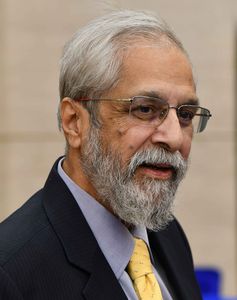Three events from the recent past suggest that the Supreme Court has taken up what appears to be an exercise in disciplining our high court judges. What does this say about our high courts?
There have been instances in the past when the Supreme Court has taken action against high court judges. For example, a judge of the Bombay High Court was not confirmed because of a judgment―which came to be known as the “skin-to-skin judgment”―under the Protection of Children from Sexual Offences Act. The government also took action against a judge of the Delhi High Court, though for entirely different (and wrong) reasons, when orders were issued for providing medical relief to victims of the Delhi riots in February 2020. The judge was earlier recommended for transfer, but the unceremonious manner in which he was transferred through a midnight order called for a strong reaction from the Supreme Court, which unfortunately did not come.
The recent events that I have in mind are the sharp comments reportedly made by Chief Justice of India Justice D.Y. Chandrachud with regard to an order passed by a learned single judge of the Manipur High Court on May 3. The learned judge directed the state government to take a decision on a pending representation regarding grant of Scheduled Tribe status to the Meitei community. The Economic Times reported the learned CJI as having said, “...we gave time to justice… to remedy his error and he did not. We have to take a strong view against it now. It is clear if high court judges do not follow Constitution bench judgments what we should do.” The Wire reported a somewhat similar statement by the CJI. A public rebuke of this nature is extremely rare, but the end result in this case is that the learned judge remains where he is. What do we make of this?
The second event is the observation made by the Supreme Court on a judgment by a learned single judge of the Gujarat High Court, who declined to stay the conviction of Rahul Gandhi in the criminal defamation case against him with regard to a speech he gave referring to the Modi surname. The Supreme Court said: “Particularly when an offence is non-cognisable, bailable and compoundable, the least that the trial judge was expected to do was to give some reasons as to why, in the facts and circumstances, he found it necessary to impose the maximum sentence of two years.... Though the learned appellate court and the learned high court have spent voluminous pages while rejecting the application for stay of conviction, these aspects have not even been touched in their orders.” While this observation, by itself, is justified, what followed was somewhat more dramatic and that is a part of the third event.
The third event is the mass transfer of 24 judges of different high courts to different parts of the country. The learned single judge of the Gujarat High Court in the Rahul Gandhi case was one of those judges transferred out. Did his judgment or the judgment of the Supreme Court have anything to do with the transfer?
Although the Supreme Court collegium led by the CJI stated that the mass transfers were for the better administration of justice, two questions arise. Firstly, what steps had the chief justice of the concerned high court taken to ensure that administration of justice did not suffer? True, he may not have any disciplinary authority over a judge, but surely, as chief justice, he can counsel the judges of his high court. That the matter had to escalate to the Supreme Court is a clear indication that there is something terribly wrong in the administration. And it is not only one high court, but quite a few.
The second question relates to the real reason for the transfers. How did the administration of justice suffer prior to the transfer orders and what was the material on the basis of which the Supreme Court collegium took the decision for the mass transfer? The power to transfer judges of the high court is a rather broad discretionary power given to the Supreme Court collegium. It has to be exercised carefully and as sparingly as possible. I would say it should be the last resort. The Supreme Court has taken the view that the transfer of a judge cannot be punitive. If judges are at fault, there are other ways to handle the situation, including conducting an in-house inquiry and, in extreme cases, impeachment.
A heavy responsibility is cast on the Supreme Court while dealing with high court judges. It must be appreciated that high court judges are not subordinate to either the Supreme Court or the Supreme Court collegium. Even a mild castigation of a high court judge by the Supreme Court demoralises other judges and also sends a message to lawyers and litigants that there are a few bad apples on the bench of the high court. In the long term, this could result in lawyers and litigants tending to lose faith in the impartiality of high court judges and certainly losing respect for them. There are far better ways to discipline our judges and it is time the Supreme Court gave it some thought, under the guidance of the CJI who has shown great sagacity in managing the Supreme Court.
The writer is a former Supreme Court judge.



